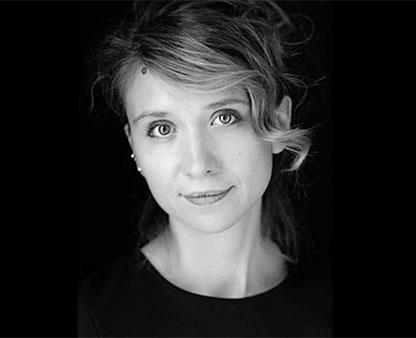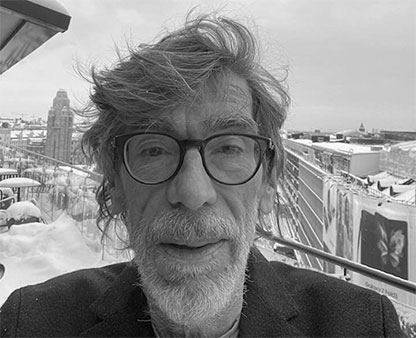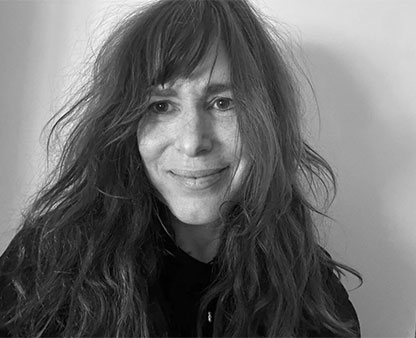Det Danske Filminstituts Roos Pris 2013 blev i lørdags tildelt filmklipperen Adam Nielsen for, som det hedder i begrundelsen, bag kulisserne med kompromisløshed, alsidighed og unik musikalitet at være med til at løfte kvaliteten af dansk dokumentarfilm.
Det er jeg meget glad for, for Adam Nielsen er min helt, og jeg fejrede begivenheden i aftes ved at se hans og filminstruktøren Tine Katinka Jensens mesterværk ”Solange on Love” (2008), hvor han klipper et intenst og nærværende og i ethvert sekund autentisk materiale nænsomt og håndfast gennem en forrygende parallelhandling og udvikling af 2 + 2 karakterer frem til et vidunderligt digt om kærlighedens fremtrædelsesformer set fra kvindernes vinkel med en mands blik. Et stort sted er noget så sjældent som et fuldendt frieri i en dokumentarisk og aldeles ægte scene.
GHOSTS OF CITÉ SOLEIL (2007)
Jeg mødte første gang Adam Nielsens filmkunst, da jeg så en arbejdskopi af ”Ghosts of Cité Soleil” (2007), som han havde klippet for Asger Leth. Det var en voldsom oplevelse, som jeg aldrig glemmer. Jeg skrev senere på den baggrund en anmeldelse af filmen, faktisk det første indlæg, jeg lavede her på Filmkommentaren:
Det er ikke journalistik det her, men vi må have styr på de politiske fakta, og klipperen Adam Nielsen vælger håndfast at gøre rede for disse ting ved at gøre journalistikken til et element i filmkonstruktionen. Den politiske tv reportage er helt regulært anbragt i dette musikalske forløb, så kompositorisk nodebundet, at jeg tænker mig der i klippemanus disse steder står: andante. Vi skal lige have vejret…
Sådan også med skiltene. De anbringes så bevidst, at de ikke kan betvivles, så grafisk sikkert, at de bliver del af den gennemførte æsteticering, filmen præges af som udtryk. Adam Nielsen bruger teksterne som det element, der skaber konstant overblik i den nervøse hastighed i klippet på samme måde, han et par afgørende steder lægger en dagbogsstemme ind, så den hvide gæst i gadebanden, en ung kvinde, Lele, fremhæves og der skabes grundlag for en kærlighedshistorie mellem hende og en af bandelederne.
Herefter behøver Adam Nielsen tilsyneladende kun tre fire scener med de to i filmens forløb til denne afgørende sidehistorie. Der har været optaget tilstrækkeligt med interviews til, at der vist nok ikke er genbrug. Hvert statement kan fysisk være – og er det i hvert fald psykisk – solidt anbragt det sted i filmen, hvor det kan skabe netop det steds tempo og energi. Og det kunne være en del af fornyelsen af klippet i dokumentarfilm, og det ville være velkommet, at klipperen vedtager, at det er en film som klippes. At tekstens udsagn må underordnes den musikalske fremdrift. De så almindelige ufrivillige flash backs, som det opklippede interview medfører, sætter enhver film i stå. Og hvert eneste statement står kraftfuldt i fuld styrke. Det er valgt af samtlige grunde for valg af klip, ikke kun for indholdet af, hvad der bliver sagt. Det her er ikke information, det er filmkonstruktion, statuarisk.
Filmen taber ikke pusten. Den opgiver historien og vælger at være et musikalsk forløb. Men bundet til denne fortvivlede intensitet. En stadig puls, måske. Der er kun en reminiscens af story-line: Aristides flugt, de må aflevere våbnene og nederlaget er en realitet. De taler og taler, Adam Nielsen lægger langsomme lyriske afsnit ind hen mod slutningen. Leles forelskelses historie transporterer min følelse, min sympati, min forståelse over til disse brutale gangstere. Bemærkelsesværdigt.
Ja, min begejstring er tydelig! Og den fortsatte. Jeg har godt nok ikke set alle Adam Nielsens værker, men de gange, det er lykkedes, er min oprindelige oplevelse blevet fastholdt og bestyrket:
VESTERBRO (2007)
Omsider har jeg så fået mulighed for at se Michael Noers skildring af Julie og Martins kærligheds historie, og det er, ser jeg, århundredets kærlighedshistorie. I hvert fald endnu. Jeg er meget glad for den film og giver den fem penne i ren spontan glæde. Jeg må alligevel prøve at begrunde – sådan lidt efter lidt. Tænke mig om.
Filmen er fremragende fordi Julie er så sød (ja, det er jo usagligt), Martin er så øretæveindbydende (det er i hvert fald rigtigt), inspirationen fra Ghosts of Cité Soleil er brugt så smukt. Klipperen Adam Nielsen og Michael Noer balancerer de to karakterers udvikling selvfølgeligt naturligt så de, skønt han ikke bevæger sig og hun er i ekspresfart, mødes atter og atter: PLANG.. ja! hjertet oppe i halsen, pulsen bankende, tørheden i munden.. det er vildt spændende!
Filmen er fremragende, fordi den går videre end cinéma vérité tradidionen, fordi den ikke blot er en skildring af virkelighed, men en virkelig konstruktion af selve viljen til liv personificeret i den unge kvinde som dokumentarisk karakter og ved hjælp af hendes lånte kamera. Hun filmer selv og sætter kameraet fra sig og filmer så også sig selv. Den vilje er den unge mands konstante udfordring.
”Vesterbro” er en forbløffende home movie, modig, munter, alvorlig, ærlig. Så klogt, så sofistikeret organiseret og fortalt fra klippebordet i den cinematografiske films tradition med indhold af biografisk drama. Lavet som direct cinema dagbog med samtaler og monologer og med en klar kunstnerisk attityde.
DEN SIDSTE DANS (2006)
…DR1 sendte Eva Mulvads vidunderlige dokumentarfilm med plejehjemsbeboerne, hvor Adam Nielsens fremragende klip af de præcise og nærværende og lyttede optagelser på den lille time udvikler en håndfuld karakterers helt særegne og forskellige livsdramaer, så vi sidder med noget nær livsgåden i hænderne, rystede, klogere og glade. Jeg opfatter nemlig ikke filmen som sort. Den er da lys, ikke som absurd, nej da, fuld af mening, slet ikke som komedie, nej, organiseret som drama, snarere.
Adam Nielsen forfølger i ”Den sidste Dans” Mulvads dybt solidariske plejehjemsskildring, disse temaer: kærligheden er forbi (”Ejnar, du er min allerbedste ven..”), depressionen (den tavse mand), erindringsstabet, forvirringen (Marie bliver mere og mere konfus), fremstiller det som tilværelse, ikke som undtagelse. Og gør det på et tydeligt, men påpegende niveau. Han undgår så vidunderligt klichérammer som dagens og årstidens gang. Griber modigt ned i eksistensens alvor i stedet, erotikkens ophør eller brutalisering, erindringens omdannelse til livet som ét enkelt nu, dødens nærhed.
Det er svært at holde en række medvirkende i balance, endnu vanskeligere at klippe disse karakterers forskellighed og udvikling frem. Adam Nielsen kan den kunst. Med denne film har han skabt en ægte kollektiv fortælling. En række personer følges omhyggeligt, så deres ændringer i filmens løb bliver tydelige. Helge ankommer, meget mod sin vilje. Han ses tavs filmens første 35 min. Så taler han med forstanderen. Han vil ud, men det er umuligt. Senere ses han ude. Har besvær med døren. Adam Nielsen falder ikke for fristelsen. Han klipper i den rækkefølge, som ikke bliver en kunstig dramatisk opbygning, en flugt, men en understregning af accepten af tilværelsen. Også denne her. Dette er selve skønheden i filmen.
Dertil kommer handlingen, som her er sat sindrigt sammen af en række enkeltforløb, der efterfølger hinanden, næsten griber ind i hinanden: den forsvundne taske, overvindelsen af angst for svømmebassinet, planlægningen af den afsluttende ballonflyvning, den tavse mands sidste tid over accept af tilværelsen frem mod døden.
En række intermezzi er lagt ind: bilerne kører over broen over sundet, en senil kvinde tæller omhyggeligt bilerne og ryger fornemt behersket sine cigaretter – denne tilbagevendende rytme af begivenheder i serie er så selve temaet i filmen, en rolig respekt fuld rytme. Ja, en intermezzi serie mere får han plads til: nu et komedietræk: tante ét og tante to har deres daglige små skænderier. Adam Nielsen får det til at lykkes, så iscenesættelsens aftryk minimeres.
Samtidig med, at han administrerer et klart system af parallelhandlinger, kan Adam Nielsen kunsten at holde rede på mange medvirkende, han kan individualisere dem, indbygge karakterudvikling hos dem alle. Han får et smukt materiale om livet på et plejehjem og leverer et filmdigt om livet tilbage.
INSIDE OUTSIDE (2006)
Filmen er instrueret af Andreas Johnsen. Den handler om storbyliv. Det handler om nutid. Det handler om samfundets nederste. Og på den baggrund handler det om graffiti. Som kunstnerisk udtryk. Adam Nielsen har klippet en indledning, som bare slår disse ting fast. Effektivt. Som em trailer.
I denne storbystemning medvirker graffitimalerne Zeus fra Paris, KR fra New York, Adams & Itso, som er fra Stockholm, men opererer i København. En kvinde fra New York skiller sig lidt ud. Hun sætter sine plakater op ved lys dag, mens folk kigger. Hun er ikke aggressiv som de andre, men glad og venlig. Er graffittikender og åbner med begejstret at genkende KR’s løbende striber af fed maling. Endelig er der Ron English, som er den ældste og mest selvbevidste.
Adam Nielsen holder styr på dem alle. Tegner en storby-ensartethed, en global samtidighed og i deres kultur et kunstpolitisk internationale. Det ligger ikke i deres statements, som jo glemmes. Det ligger i den filmiske konstruktion. Adam Nielsen skaber på den måde et overraskende nyt niveau i den oplysende film. Men der er ikke noget skoleagtigt i det. Der er den nervøse rytme, som byen, som er de medvirkende. Der er en indforståethed, en empati.
FILMSTRIBEN
Disse filmtitler, som Adam Nielsen blandt mange andre har klippet eller klippet med på, kan ses på Filmstriben: 2011: Min min (Kaspar Astrup Schröder), Rupture (Janus Metz og Christina Hamre). 2010: Det gode liv (Eva Mulvad), Mission kvindehandel (sammen med Steen Johannessen og Ida Bregninge) (Judith Lansade og Sine Plambech), Med døden til følge (Eva Mulvad), Opfindelsen af Dr.Nakamats (Kaspar Astrup Schröder), Mord (sammen med Marion Tour) (Andreas Johnsen). 2008: Solange on Love (Tine Katinka Jensen), Mirror (Joachim Ladefoged). 2006: Vores lykkes fjender (Eva Mulvad). 2005: Højdeskræk (Jacob Tschernia), Inside Outside (Andreas Johnsen og Nis Boye Rasmussen).



